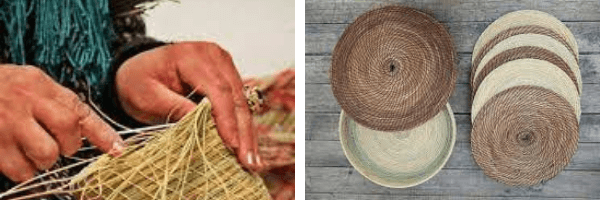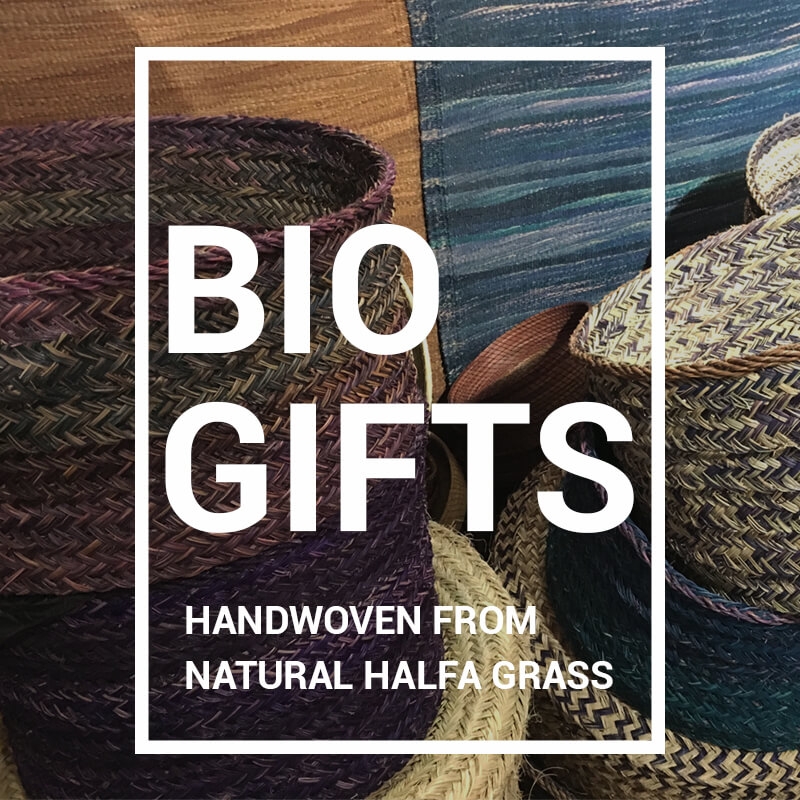
The Alfa / Halfa is a perennial grass, which abounds in north africa, in the regions of high steppes. the Carthaginians introduced them in Andalusia, probably at the origin, for the manufacture of their ropes. In Tunisia, Alfa mainly grows in Kasserine but also in Gafsa, Sidi Bouzid and Kairouan.

These grasses grow in clumps not exceeding one meter in height and form large sheets. They produce stems, which are harvested by hand, between May and July, by wrapping them around sticks to pull them out without damaging the seeds. Difficult and unrewarding work, the harvest of the Alfa has today become scarce, thus threatening the survival of the species. The craftsmen of Kasserine and elsewhere, soak the stalks of alfa for a whole night, to make them malleable. Sometimes they dye them with the aid of a natural dye, of which only a few Initiates know the secret and which, according to the dosage used will become brown or black.Alfa is then woven or knotted, according to ancestral techniques, to the hand or using rudimentary tools, for the manufacture of ropes, baskets, mats, etc ...
The raw appearance of Alfa objects, utilitarian at the origin, have made them very trendy decoration accessories, particularly popular today. The Atelier Driba AD 93, to help maintain the durability of this craftsmanship. exception, has created models of mats and various baskets with exclusive designs and very contemporary, that the artisans of the region of Kasserine, have achieved brilliantly. The fair marketing of these products is vital for these artisans. These objects in Alfa, The result of hard work is their only means of subsistence. Alfa is also a biological and hypoallergenic fiber. Qartaj helps Alfa artisans to export their products worldwide.
Text was translated from a frensh version of ASSOCIATION TUNISIENNE DE PROMOTION & DE SAUVEGARDE DES MÉTIERS ET DU PATRIMOINE ARTISANAL
